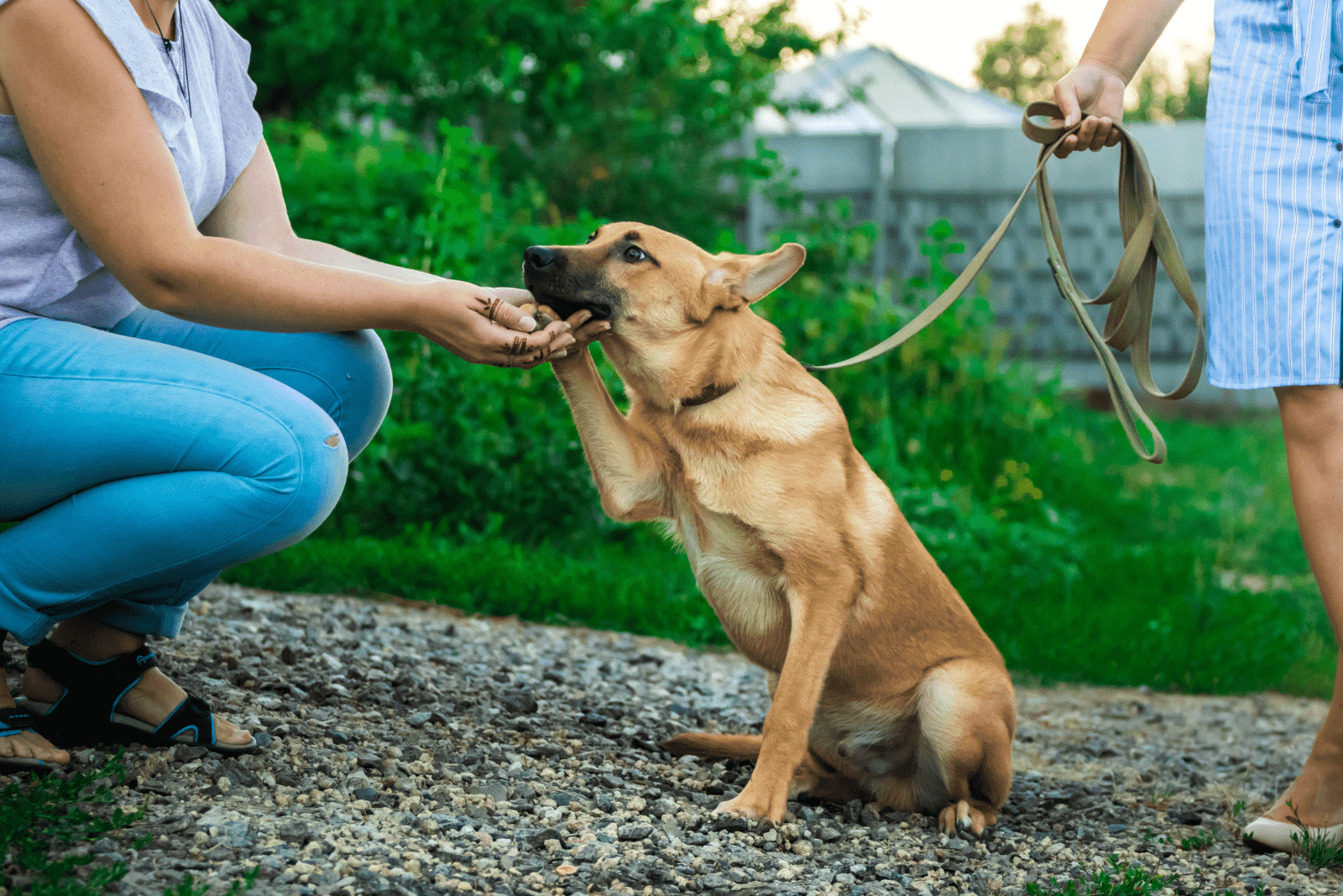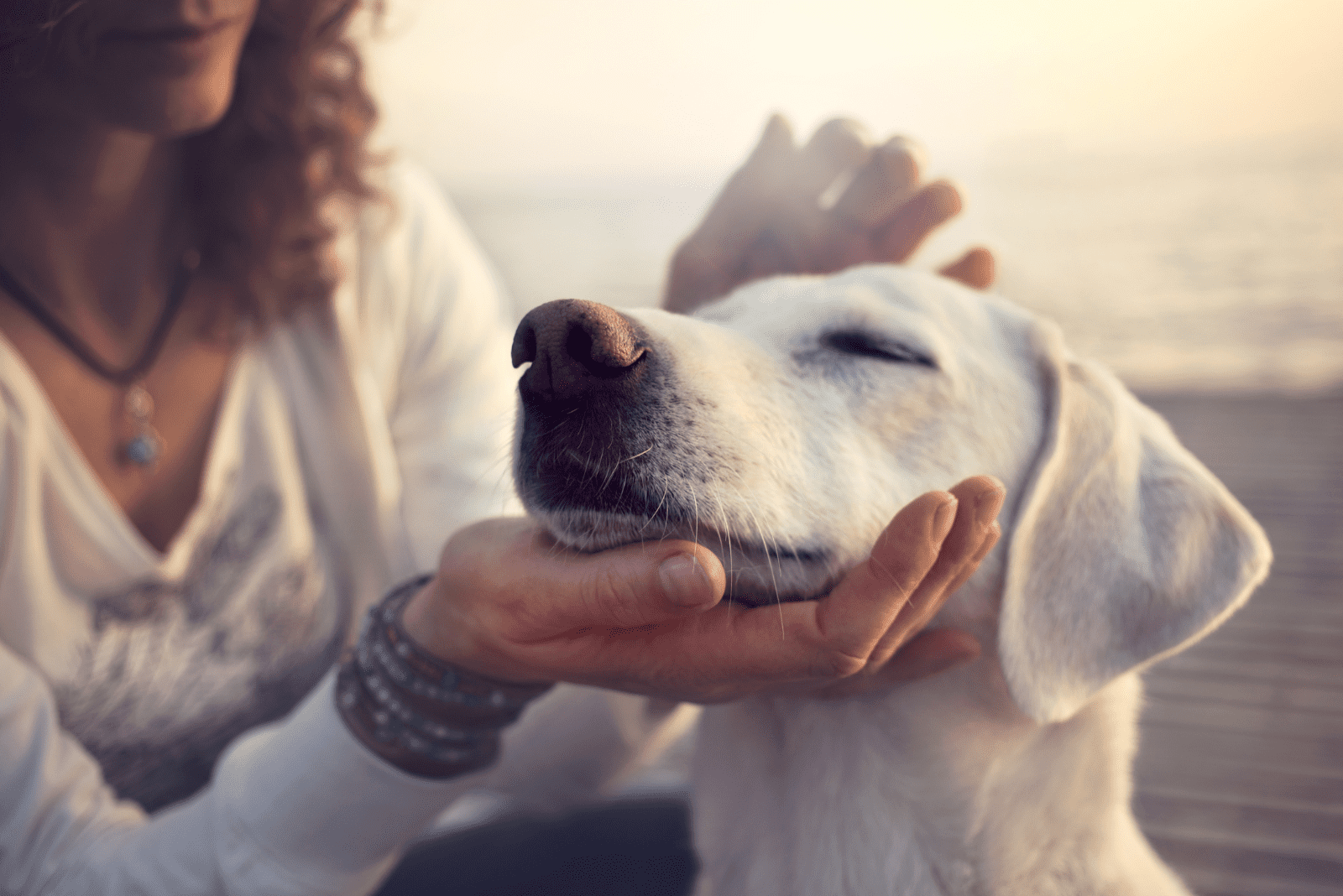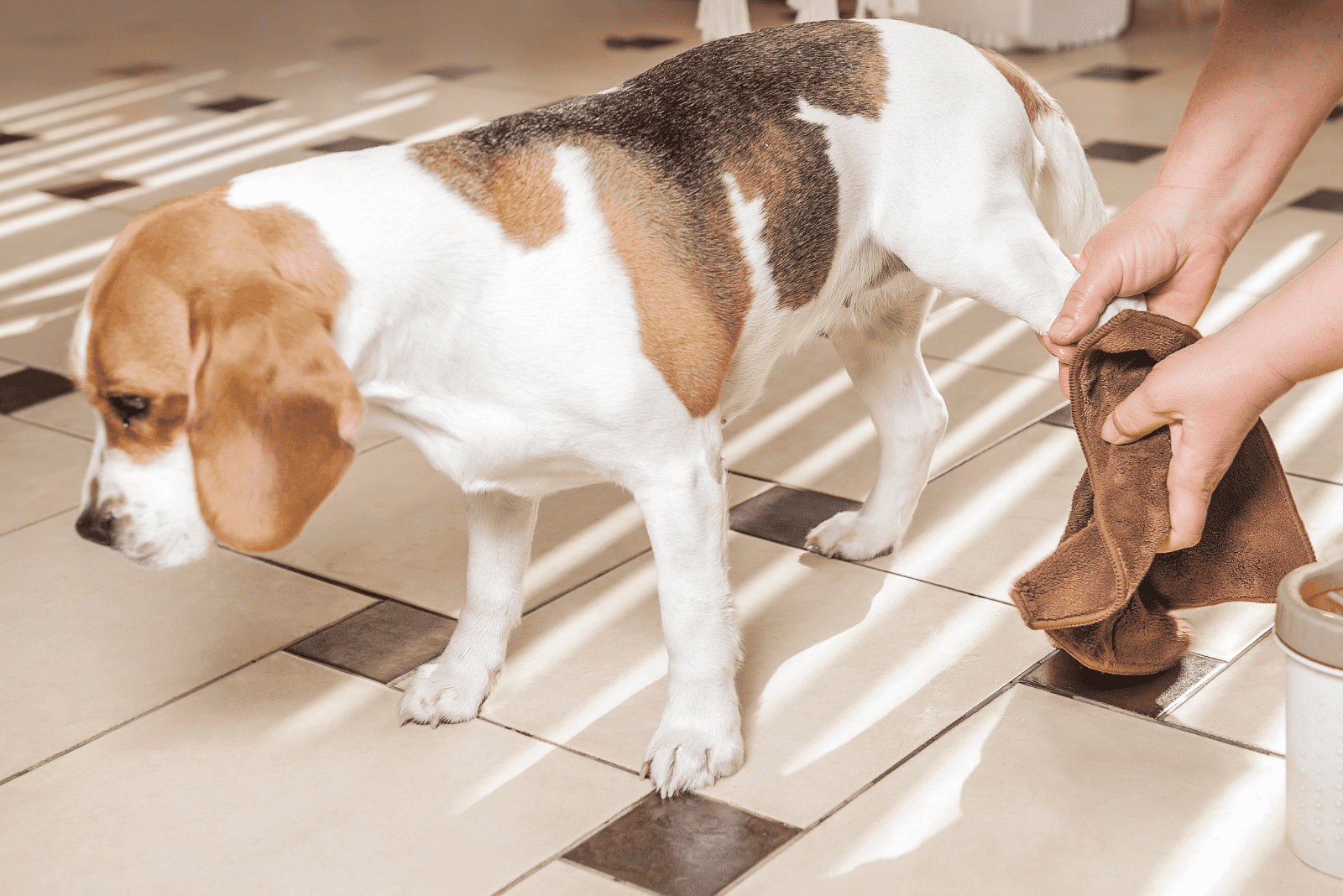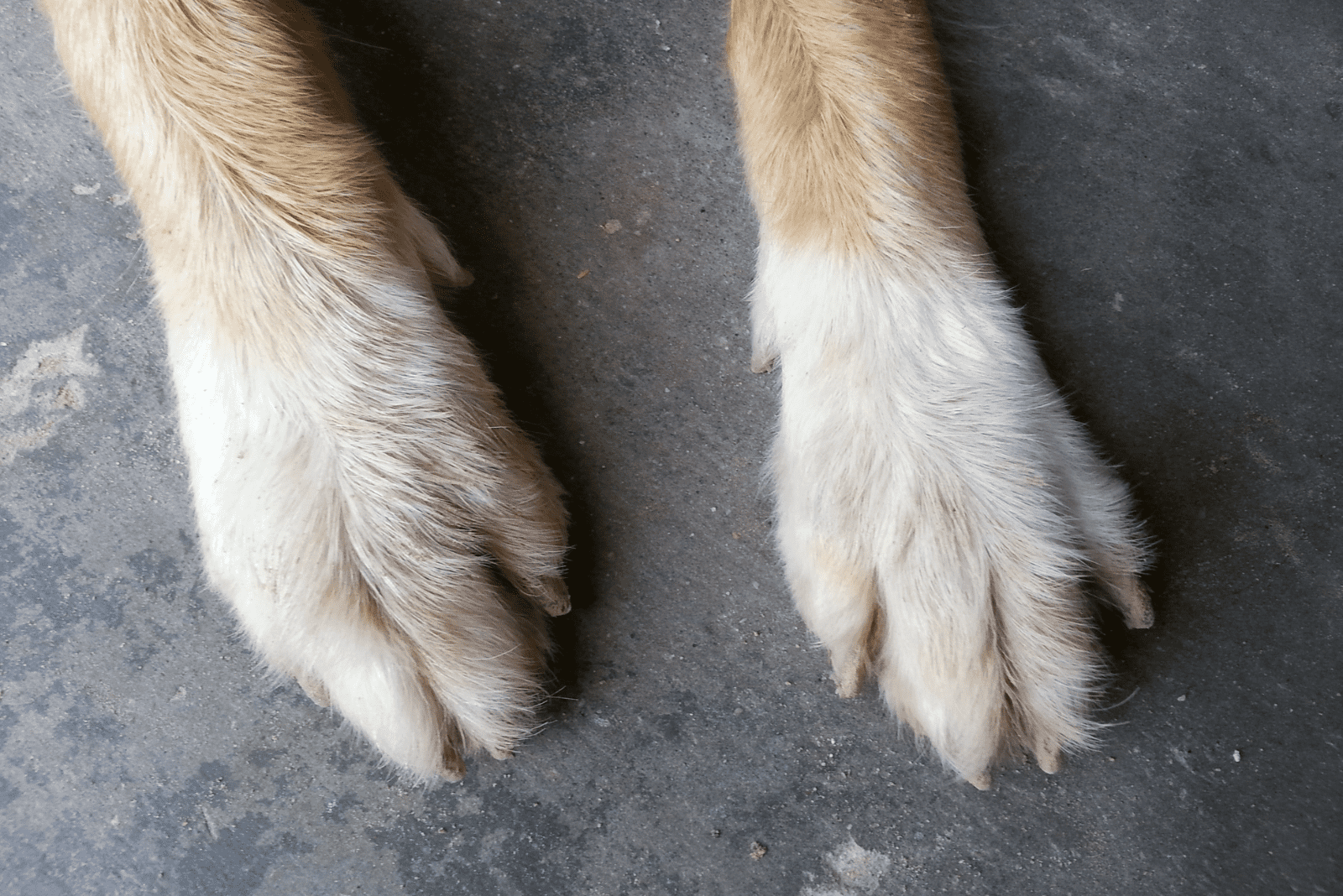Human’s nails can break easily. Sometimes it’s because they were simply hit at a bad angle, and other times, various diseases or injuries can lead people to struggle with weakened nails. And it can take a long time for a new nail to grow in its place. But what about the nails of our furry friends?
Dogs’ nails are also quite sensitive and are exposed to frequent damage, arguably even more so as they walk on all of them! For example, your dog may damage a nail during the most casual play session or while running. A nail can break or even completely fall off the tip of the paw.
This can cause the poor dog severe pain. You may notice the dog begin to limp and, in some cases, bleed heavily.
A dog nail separated from the quick is not a rare phenomenon. Many dog owners have dealt with it.
In today’s article, we will explain what causes the separation of the dog’s nail from the quick and how dangerous or not this phenomenon can be.
We will also cover how to help our furry friends recover from this injury. Furthermore, we will investigate preventive measures to keep our dogs from developing such nail problems in the first place!
Is Dog Nail Separated From Quick An Emergency?

You probably already have a good idea of how sensitive dog’s nails are. You may also have had difficulty calming your puppy down to clip his nails. But the real problem arises when the dog’s nail separates from the quick.
Dogs are constantly on the move, so the nail can take a long time to heal, and unfortunately, the dog will feel constant pain from the injured area. An additional problem is the area can also become infected due to the fact that the wound is open.
Due to this concern, the veterinarian should prescribe antibiotics to prevent infection.
If there is bleeding, the situation is more dangerous. Dogs will naturally try to lick the wound and tear off the bandages, so it is a good idea to put a so-called Elizabethan collar on the dog. This collar will prevent him from touching the separated nail.
In some cases, separating the nail from the quick itself isn’t as severe, and you can fix this problem yourself at home. So, we can’t say that this is a life-threatening situation, but if an exposed quick leads to infection, then it is an emergency.
What Are The Signs Of Infection?
As you observe your dog’s behavior after the injury, it may seem that he is recovering well. He shows no signs of pain and seems to be returning to his good old self. If that’s the case, he might be out of the woods. However, we recommend you continue to pay close attention to the wound in case it still become infected.
But how do you recognize an infection?
If there is an infection, you will notice that the dog’s paw is swollen. Also, it is possible that pus will appear from the wound. Therefore, be very careful during the first few days after your dog’s injured nail is injured.
Infections can be very dangerous, so you must act immediately if you notice any sign that the wound is infected.
What Is The Quick?
The quick is a vein located inside a dog’s nail. Therefore, a quick is a part of a dog’s blood vessels. The hard part of a dog’s nail that you trim is the keratin outer shell, which has no blood vessels or nerve endings, unlike the quick.
The quick is embedded in a keratin shell, and if the hard keratin shell separates from the quick, this will cause pain and discomfort for your puppy.
If the dog has transparent or white nails, this vein is very easy to spot, which is especially important when cutting nails.
However, the problem arises in dogs with dark or black nails. In such dogs, the quick is quite difficult to spot as it’s hidden by the darker color. For this reason, it is necessary to cut the dog’s nails carefully and slowly so that the nail doesn’t separate from the quick and injure the dog.
What Causes A Dog Nail To Separate From The Quick?
Why does this dog nail problem occur in the first place? There are many different reasons.
A dog can randomly injure a nail in even the most common everyday situations. Sometimes even something as simple as walking on hard surfaces, running, or playing can lead to a break.
Also, longer nails in dogs are more prone to snagging. Some dogs, like Great Pyrenees, have dewclaws, which are essentially the equivalent of thumbs or big toes in humans, and thus are more prone to snagging. Because of this, some people have them removed, while others think that this is completely unnecessary.
In any case, cutting our dog’s nails regularly is important. It should be done in accordance with the requirements related to a specific breed, or whenever you notice that it’s time.
Some dogs naturally wear their nails down, and others will always need your help. This depends a lot on the type of ground your dog walks on most often. Please note, as we said before, that it is very important to be extremely careful when trimming your dog’s nails so that you don’t injure him.
Also, separation of the nail from the quick is quite common in older dogs because they have brittle nails and therefore are more prone to injuries. So take extra care when trimming their nails.
How To Recognize Dog Nail Is Separated From the Quick?
Dog nail injuries are fairly common, so how can you be sure that the problem is your dog’s nail has been separated from quick and not something else?
Well, there are a number of common symptoms you will probably notice if that’s the issue. They are as follows:
• Dog limping
• Excessive licking
• Swollen paw
• Bleeding
If your dog’s nail is damaged, he will probably be in severe pain, so there’s a strong chance this is why he’s limping.
If you notice your dog licking his butt, that might be an indication that there’s a yeast infection or bacterial infection around his anus. Similarly, if you see him licking his paws excessively, that might indicate a broken nail.
Also, a torn nail might lead to a swollen paw and bleeding around the affected area.
How Do You Treat A Dog With A Broken Nail?
If you notice that your dog’s nail has separated from the quick, you will need to take several steps. You will probably notice that this nail injury is causing your dog quite a bit of pain and discomfort. So, you need to react as soon as possible.
In addition, if this sort of injury isn’t addressed quickly, it is possible for an infection to develop.
What should you do to help your dog?
1. Calm Your Dog

Each dog will react differently, but one thing is certain – none of them will be happy that you’re touching the sensitive area that is currently causing them pain.
Some of them will demonstrate aggressive behavior. But, we all know that aggression is a sign of fear in dogs. Some others may lie helplessly and yelp. In any case, do your best to calm and comfort your dog.
Pet him and speak to him gently and encouragingly. I am sure you and all your family members treat your dog as part of the family, and this is a situation where you should be especially kind to your pooch.
In the end, you know your pet best and know what type of encouragement they will respond to best. Perhaps a treat might calm them down, whereas some dogs in distress might refuse food completely. Find a way to make this experience at least a little less unpleasant for your dog.
2. Assess The Severity Of The Injury
First, check the paw and determine exactly how severe the injury is.
The dog will likely refuse to let you touch the wound, so try to be as gentle as possible while examining the injured area.
In most cases, pet owners will be able to help their dogs by themselves. This is why it is good to be as educated as possible about different health conditions that can appear in our dogs. Even though not all of us are professionals, we can all learn to give first aid to our pets at home.
3. Remove The Rest Of The Nail
In some cases, the entire nail will completely separate from the quick, while sometimes, part of the nail will remain hanging.
In the second case, you should remove the part of the damaged nail that is hanging.
You have to be very careful here. If you don’t think that you can do this yourself because you’re worried about causing further damage, it’sbest to seek the help of a professional.
4. Disinfect The Wound

The wound must be disinfected immediately. Wash the paw with warm water and thoroughly clean the wound.
Any dirt remaining on or around the nail can cause an infection. After the nail has been cleaned, it’s best to disinfect it with a wound spray or a pet antiseptic, which we always recommend pet owners have on hand in case of emergency.
5. Pay Attention To Bleeding
If you notice blood, you must stop the bleeding as soon as possible. It would be best to wrap the dog’s paw in a clean towel.
It’s crucial to make sure the bleeding stops!
For this emergency and all other unforeseen injuries, it’s always a good idea to have a dog first aid kit at home.
These kits contain items such as styptic pencils, styptic powder, or gels in case your pet is ever wounded. You can find such a kit in all pet stores.
If you don’t have one when your dog’s toenail is injured, you can use other household ingredients in a pinch, such as baking powder or cornstarch, which will help stop the bleeding.
6. Use A Bandage
After you’ve taken all these steps, it’s necessary to bandage the wound, which is best done with gauze, first-aid tape, or a bandage.
How can you tell if the wound has become infected? The wound should always be clean. If there is an infection, you will notice bleeding or pus in the wound. If this happens, you will have to visit a veterinarian to prescribe your dog antibiotics.
7. Call the Veterinarian
We believe that most dog owners will be able to handle taking care of a nail injury in their pets.
But even if you do feel you’ve taken care of it, we still strongly recommend that you call the veterinarian afterwards. Explain the situation and how you handled the injury.
Being an expert, the veterinarian will probably ask you some questions and can then tell you if it’s necessary to bring the dog in for an examination. In addition, they will explain to you how often the bandages need to be changed and how to make sure that the wound is healing properly.
Also, your vet might prescribe some pain medication to get your dog through the healing process more easily.
In some cases, a vet will want to intervene immediately if you haven’t been able to adequately repair your dog’s split nail on your own. Also, if things don’t seem to be looking good, sedation might be required. But these cases are really very rare.
How Long Does It Take For A Dog’s Nail To Grow Back Over The Quick?

A dog’s nail usually regrows in 2 to 3 weeks. In more severe cases, it can take longer, even up to 8 weeks.
The healing process depends a lot on various factors, such as the dog’s age, its breed, and its general health.
Also, how you take care of your dog throughout the process will play a big role. Therefore, be sure to follow your veterinarian’s instructions to the letter. Make sure you change the bandages regularly and keep the wound clean.
Also, check how the wound looks and if it seems to be healing well. If anything seems strange or off, contact the veterinarian immediately. Pay attention to your dog’s behavior and appetite. Changes in behavior can also indicate that something is wrong with your dog.
Should Your Dog Go On A Walk During The Healing Process?
In addition to taking care of the wound after your dog has suffered a nail injury, you should also pay attention to his behavior.
We all know that how often we walk our dogs is important. But what is recommended in the case of such injuries? For the first few days, especially if the dog is still in pain, it would be best to take a break from walks.
The wound will heal best if the dog rests and doesn’t tire himself out. If you decide to take him for short walks, pay attention to whether your dog limps or walks with difficulty.
Also, it would be better for him to walk on gentle ground that won’t cause damage to his nails and that he can walk on easily, even with a bandage on his paw. In addition, after the walk, look at the condition of the wound again and make sure that it’s cleaned. If it looks worse after a walk, then take a break from them if necessary.
What Can You Do To Prevent A Dog’s Nail From Splitting From The Quick?
As you can see, when your dog’s nail breaks, there are certain steps you need to take to make sure your dog recovers quickly and with as little pain as possible. But is there anything you can do to make sure this doesn’t happen in the first place?
Fortunately – yes, there is!
There are certain steps you can take to prevent the breakage of your dog’s nails.
1. Feed Your Dog The Right Food

Quality food is essential to keeping our dogs healthy and happy. Proper nutrition gives them energy for daily activities.
Many health problems in dogs arise as a result of inadequate nutrition. Problems with nails and frequent breakage and damage of nails can be a sign that the food you feed your dog doesn’t have enough of the nutrients that he requires .
If you think you’re otherwise doing everything right, and your dog still has weak nails that are prone to breaking, the reason may be his diet!
Therefore, in accordance with your budget and what you’re able to provide, choose a food that will best contribute to your dog’s health.
The food you should choose will also depend significantly on dog breed. For example, the food that is the best option for a Beagle may be different from the food that is recommended for a Chihuahua.
You may also need to add supplements to your dog’s diet to make his nails stronger and healthier. You should definitely ask your vet for this information.
2. Trim Your Dog’s Nails Regularly
Regular trimming of your dog’s nails is crucial to prevent injuries, such as nail separation from the quick.
As we mentioned before, long nails are more susceptible to cracking and damage, so be aware of how long your dog’s nails are.
There is a different recommendation for each dog breed on how frequently their nails should be trimmed.
However, don’t rely on this recommendation alone. Trim the nails as soon as you feel that they’re too long and are making it difficult for him to move around.
3. Choose Adequate Nail Clippers
Regular nail trimming should be part of your standard dog care routine, just like regular brushing or ear cleaning. In order to do so, it’s important that you choose nail clippers that best suit your pet.
There are many different types of nail trimmers available today, and if you have trouble choosing, you can ask your veterinarian to suggest the right ones.
Extra tip: check our suggestions on the best nail clippers for Goldendoodles!
4. Nail Trimming Should Not Be Traumatic For Your Dog
Dogs are very sensitive creatures and have very strong emotions. Therefore, they sometimes react strongly to things that we don’t even notice. So, for example, your dog can suddenly become scared of something in the house and leave you completely perplexed.
Likewise, nail trimming can be unpleasant for many dogs. Although nail trimming should never hurt them as a rule, many dogs refuse to cooperate.
Therefore, it is necessary to prove to them that this process isn’t traumatic and that they shouldn’t be afraid of it.
The best way to do this is to introduce a nail trimming routine while your puppy is still very young.
First, show him the nail clippers and let him smell them. After that, gently bring the clippers closer to one nail and try to cut it. It would also be good to encourage him with his favorite toy or treat during the process.
Also, praise your dog after cutting his nails to let him know what a good job he did. That way, it will be easier to establish a nail trimming routine, and it will eventually become something that your dog is completely used to.
5. Seems Too Difficult? Contact A Groomer!
You’ve tried cutting your dog’s nails, and you’ve done everything in your power.
You made this process pleasant for your dog, tried to bribe him with his favorite treat, and tried to be as gentle as possible.
However, your pet still refuses to cooperate… Don’t despair!
If nothing else seems to work, you can always contact a professional groomer. This way, neither you nor your dog will lose patience, and his nails will be neat and healthy!
Conclusion
A dog nail separated from the quick is a painful and unpleasant experience for any dog.
Also, every dog owner experiences fear and panic when they see that something is wrong with their pet. We explained that this kind of injury in your dog is not life-threatening, but, nevertheless, it is necessary to take certain steps to help your dog.
It’s always good to seek the help and advice of a veterinarian, even if you managed to help a dog with a nail injury yourself. It’s also very important to monitor the healing process of the nail.
“An ounce of prevention is worth a pound of cure” is a famous saying, and for good reason! We can’t always prevent our beloved pets from suffering injuries such as the separation of a nail from the quick.
However, what we can do is provide them with proper nutrition and take care of regular nail trimming. In this way, we can significantly reduce the occurrence of broken or separated nails in our dogs.
We hope that this article was useful for you and that it’s helped you make sure to pay attention to the nails on those small, sensitive paws in the future!
Read Next: Can I Walk My Dog After Cutting The Quick? Here’s What You Should Do













